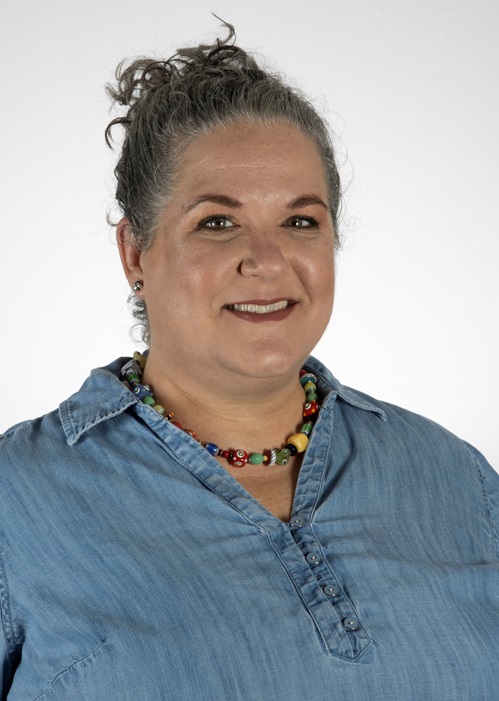The Future of Health: Alumni Research on Spinal Manipulation and Mobilization in Children

Dice's studies focus on focused on the effects of using spinal manipulation among young patients
“The first course I took through TTUHSC was on the hip, and I was like ‘woah,’” said Jenifer Dice, PT, ScD. Dice is a Board Certified Pediatric Clinical Specialist certified in Orthopedic Manual Therapy and an alum of the TTUHSC Doctor of Science in Physical Therapy program. “I thought, ‘I treat a lot of kids who sit in wheelchairs.’ Learning these hip mobilization techniques got my wheels turning.”
Dice says that the courses she took at TTUHSC helped her recognize how to incorporate the orthopedic skills she was re-learning to better treat her neurological patients. Furthermore, she developed a better understanding of how every orthopedic patient has neuro issues that need to be addressed, and every neuro patient will have orthopedic issues that need to be addressed.
“That’s what led me down this road of discovery — Why aren’t we using this more in the pediatric population? How could we use this more, and how do we get this information out there?”
Dice has lectured at the national Combined Sections Meeting (CSM) of the American Physical Therapy Association (APTA) on the pediatric hip and will present on the pediatric elbow in 2025. She traveled to Switzerland this summer, presenting her most recent Delphi study on Spinal manipulation and mobilization among infants, children and adolescents: an international Delphi survey of expert physiotherapists.

Jenifer Dice, PT, ScD
This study is actually Jenifer’s second Delphi study to complete in her career. The first was "Manual Therapy in Preadolescent Children: A Delphi Investigation of Physical Therapists in the United States." When considering a pediatric population under the age of 13-years-old, expert physical therapists experienced in manual therapy or pediatrics identified manual therapy techniques appropriate to use among children. The manual techniques defined by the panel of experts included joint mobilizations, massage and myofascial release among others.
Her most recent Delphi study, however, collaborated with a task force within the International Federation of Orthopaedic Manipulative Physical Therapists (IFOMPT). This study focused on the appropriateness of using spinal mobilization and manipulation among infants, children and adolescents — with each age group broken down even further into three different segments of the spine — cervical, thoracic and lumbar. A pediatric special issue of The Journal of Manual and Manipulative Therapy is available via open access through August 2024.
Findings on Spinal Manipulation and Mobilization Among Infants, Children and Adolescents
Dice shares that the task force worked on three projects: the Delphi study, a clinimetrics review, and a scoping review regarding the use of spinal mobilization and manipulation in the pediatric populations.
Each part came together to inform essentially a “position statement” for IFOMPT to identify when it is and might not be appropriate to use spinal mobilizations and manipulations in the pediatric population.
“Our major finding was that spinal manipulation should not be done in children or infants, regardless of what condition or impairment they might have.” Dice said.
Findings on Manual Therapy in Preadolescent Children
Her 2021 Delphi study among United States physical therapists found that joint mobilizations could potentially be utilized for children that have specific impairments, like joint hypomobility, muscle or myofascial pain. However, Dice notes that this initial survey only looked at ages 13 and below and didn’t delineate between children and infants.
“Knowing what I know now, I would have done my original study a bit differently the first time around,” said Dice. “It was the first time this topic had really been looked at. That’s typically why we do a Delphi study — when there is a lack of research or evidence on a specific topic.”
According to Dice, while there was a consensus when it came to the use of mobilization, the use of joint manipulation had pediatric and manual therapists split. Manual therapists were open to using joint manipulation, when clinically applicable, where the majority pediatric therapists were opposed.
As for her position? Dice has her theories, but she says more research has to be done before she can find more clarity on the matter.
“More studies need to be done,” she says. “I think we don’t have empirical evidence, and we don’t have qualitative data yet. There are patients that will benefit from it and that’s why I don’t want to close the door completely on joint mobilization as a tool until we have more answers.”
She says it must be a systematic approach evaluating the patient’s impairment, what the benefits are, what potential harm could be done, and what alternative approaches are available. “You really have to use sound clinical judgment to ensure the benefits outweigh any potential risks.”
Related Stories
TTUHSC Cancer Researcher Honored by National Academy of Inventors
C. Patrick Reynolds, M.D., Ph.D., director of the School of Medicine Pediatric Cancer Research Center at TTUHSC, has dedicated his life as a researcher to developing treatments for childhood cancers.
TTUHSC’s Hudson Set to Serve as President for Society of Clinical Research Associates
The Society of Clinical Research Associates (SOCRA) has elected Texas Tech University Health Sciences Center’s (TTUHSC) Catherine Hudson, Dr.P.H., as its president for 2025-2026.
Clinical Research Institute a Source of Pride for Retiring Griswold
Upon his retirement, John Griswold, M.D., reflects on the Clinical Research Institute and what it has achieved.
Recent Stories
TTUHSC Cancer Researcher Honored by National Academy of Inventors
C. Patrick Reynolds, M.D., Ph.D., director of the School of Medicine Pediatric Cancer Research Center at TTUHSC, has dedicated his life as a researcher to developing treatments for childhood cancers.
TTUHSC School of Nursing Celebrates 10 Years of the Veteran to BSN Program
The TTUHSC School of Nursing recognized the 10-year anniversary of the Veteran to Bachelor of Science in Nursing (VBSN) program during the fall 2025 commencement ceremonies held Dec. 13 in Lubbock, Texas.
TTUHSC Dean to be Inducted into the National Academies of Practice as Distinguished Fellow
Gerard E. Carrino, Ph.D., MPH, dean of the TTUHSC Julia Jones Matthews School of Population and Public Health, will be inducted into the National Academies of Practice (NAP) as a Distinguished Fellow of the Public Health Academy.
